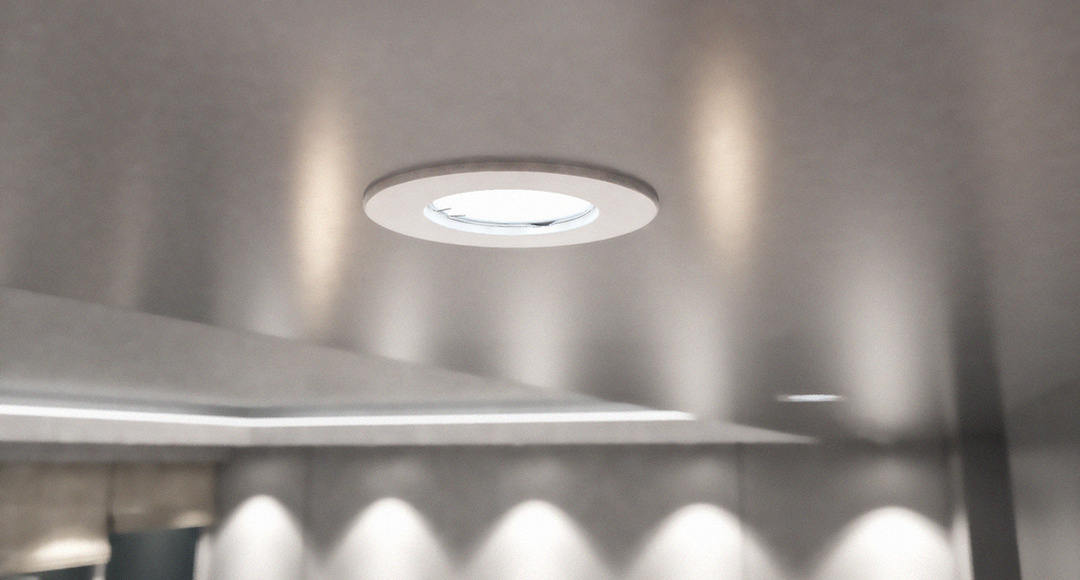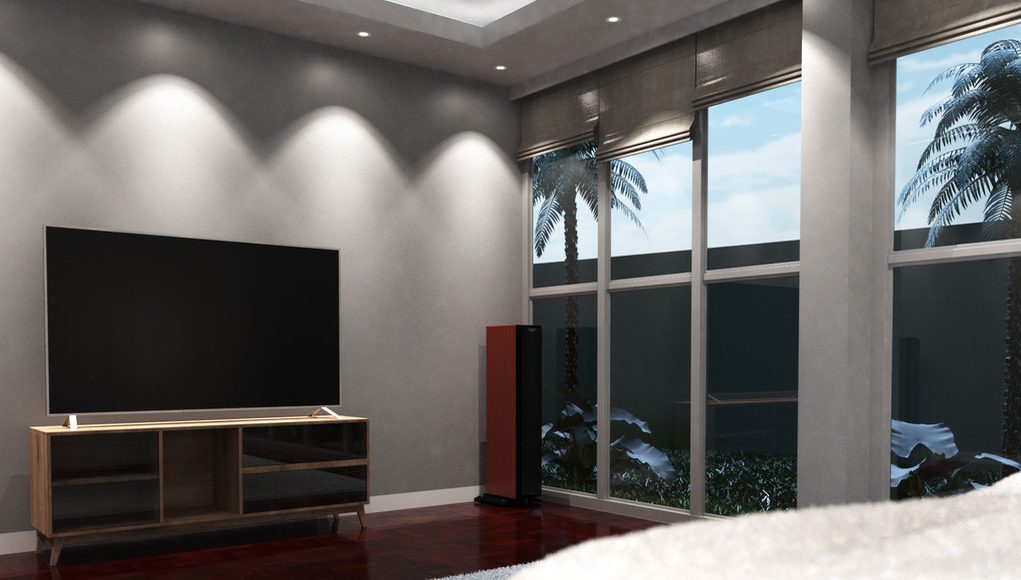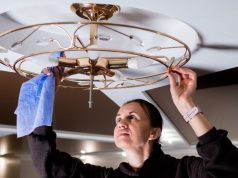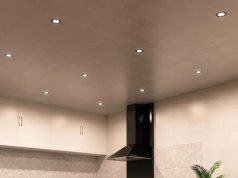Getting quality fire-rated downlights means that you clearly care about not setting your house on fire. But here’s the catch: buying them isn’t enough. If you don’t look after them, you might as well light candles instead.
Knowing how to maintain fire-rated downlights matters. It keeps your lights safe, working, and compliant with all those annoying-but-important building rules. Ignore it, and you risk faulty wiring, poor lighting, or worse—losing the fire protection you paid for in the first place.
This guide covers the key stuff: how to inspect, clean, test, and replace fire-rated downlights. As you’ll soon learn, it’s easier than you think.
Understanding Fire-Rated Downlight Components
Know what you’re dealing with before you start messing around. Each part plays a role in keeping things safe and shiny.
Downlight Fixture
Start with the obvious bit—the fixture itself. It holds everything together and keeps your ceiling from looking like Swiss cheese.
Look for cracks, warping, or discolouration. These are signs the fixture is not loving life.
Heat and moisture are the usual suspects. Bathrooms and kitchens are rough places for lights. Keep an eye on them.
Wiring and Connections
Wires are the lifeblood of your lighting. When they go wrong, it’s never subtle.
Check for loose or frayed wires. If it looks like a rat’s been nibbling, don’t just tape it. Get it fixed properly.
Bad wiring equals more risk of fire or power cuts. Neither of those is fun unless you enjoy sudden darkness and insurance claims.
Fire-Rated Seals and Insulation
These parts are the real heroes during a fire. Keep them intact, or lose your ceiling’s fire protection.
They help stop a fire from spreading through the ceiling. If they’re damaged or missing, that protection is gone.
Look for gaps, cracks, or material that’s gone crusty or soft. Fire protection should not be crunchy.
Light Source (LED, Halogen, etc)
The bulb you use affects performance, lifespan, and safety. Choose wisely or suffer the flickering consequences.
Fire-rated LEDs last longer and run cooler than halogen and other bulbs. If you’re still using the latter… well, stop. It’s 2025.
Whatever your light source, check it regularly. If it flickers, dims, or burns out fast, something’s off. Use the right bulb type and wattage. Remember: Wrong bulb = hot mess. Sometimes literally.
Regular Inspection Procedures
Routine checks keep minor issues small. Don’t wait until your ceiling turns black to take a peek.
Visual Inspection
Have a quick look every few months. Check for cracks, burn marks, or discolouration. Are there loose components or wobbly fittings? Fix them before they fall on someone’s head.
Doing these usually takes only five minutes. If you can scroll social media, you can certainly do this.
Electrical Inspection
This bit isn’t for amateurs. If you’re not trained, don’t start poking around live wires. Call a sparky.
They’ll check for loose wiring, dodgy connections, and arcing. That’s when electricity jumps—very cool in sci-fi, less cool in ceilings.
Fire Integrity Inspection
Fire protection only works if everything’s sealed up properly. Don’t let air gaps become fire paths. Make sure the fire seals and insulation are still in place and undamaged.
The ceiling needs to stay sealed in a fire. If you’ve been up there messing around, double-check everything and make sure everything is where it should be.

Cleaning and Care
Dirty lights are dull, inefficient, and surprisingly good at starting fires. Clean them like you care.
Cleaning Fixtures
Dust builds up, especially in ceilings. Use a dry piece of cloth or a soft brush to clean around the fixture.
Don’t use water, harsh chemicals, or your nan’s old cleaning spray. You’re cleaning lights, not scrubbing tiles.
Bulb Maintenance
Grubby bulbs waste energy and heat up more. Give them a gentle wipe—no elbow grease required.
Wipe them carefully and gently with a soft, dry cloth. If they’re looking rough, it’s time to replace them. And yes, replace fire-rated downlights with the correct type. Read the box. It’s not rocket science.
Testing and Compliance
Lights aren’t just decoration. Make sure they actually work—and follow the rules while you’re at it.
Functionality Testing
Turn the lights on. Do they flicker, hum, or look like they’re thinking about dying? If yes, don’t wait. Investigate. Something’s wrong.
Lights should turn on smoothly and stay on. If not, the wiring or the bulb could be to blame.
Fire Integrity Testing
A light that fails in a fire is pointless. Test the system, not just the switch.
Some systems let you test fire seals or alert you when they fail. If yours doesn’t, inspect it manually. Make sure the ceiling still has a proper seal around the fitting.
Fire safety is not the time for guesswork. Don’t wing it.
Emergency Lighting Integration (If Applicable)
If your downlights double as emergency lights, test that function regularly. Most have a test button. Press it. If nothing happens, you’ve got a problem.
Emergency lighting that doesn’t work in an emergency is about as useful as a chocolate teapot.
Common Maintenance Issues and Solutions
Things break. It’s OK—unless you ignore them. Here’s what to look for and how to sort it:
Loose Connections
If your fire-rated lights flicker or fail, start by checking connections. Loose wires can cause arcing, overheating, or outages. All bad news.
Don’t try to fix this yourself unless you know what you’re doing. Electricity bites.
Damaged Seals or Insulation
Cracks and gaps don’t just look ugly—they destroy fire protection. Fix it fast.
If you see gaps around the fixture, the seal’s probably damaged. You’ll need to replace it. Otherwise, your fire rating is toast.
Use materials that are actually fire-rated. A kitchen sponge won’t cut it.
Bulb Replacement Issues
Not all bulbs are created equal. Using the wrong one is asking for problems. They can fry your fixture or just not fit.
Always use the right size, type, and wattage. And know how to replace downlight bulbs properly. No guessing.
When you replace fire-rated downlights, don’t force them. It’s a light fitting, not a jammed door.
Safety Precautions
Let’s not get electrocuted or fall off a ladder, yeah? Follow the basics so you don’t become a cautionary tale.
Electrical Safety
Switch off the power before doing anything. Yes, even if you’re “just looking.”
Electricity is fast, and so are accidents. Test with a voltage detector if you have one. If not, play it safe and get help.
Working at Heights
Use a proper ladder. Not a wobbly chair or your cousin Dave’s shoulders.
Make sure it’s stable. Don’t overreach. Your lights aren’t worth a broken ankle.
Fire Safety
Only use approved materials and parts. That bargain bulb pack from the market stall is probably not fire-rated.
Stick to quality gear. Your ceiling will thank you.
Ready to Maintain Fire-Rated Downlights?
Fire-rated downlights aren’t set-and-forget. They need regular care to stay safe, effective, and up to code.
Forget to maintain fire-rated downlights, and you’re flirting with flickering lights, dodgy wiring, or worse—utterly useless fire protection.
Here’s the quick-fire checklist:
- Inspect fixtures, wiring, and fire seals regularly.
- Clean fire-rated downlights carefully—no sprays, no shortcuts.
- Use the right bulbs. Always.
- Test lights for performance and compliance.
- Don’t DIY electrics unless you’re qualified.
- Stay safe when working up high.
- Replace damaged parts with proper, fire-rated gear.
The bottom line? A little bit of effort today will spare you a lot of grief later.
If you need replacement parts, new bulbs, or you just want to upgrade like a legend, Simple Lighting has you covered.
We stock proper fire-rated downlights, certified accessories, and everything else to keep your setup legal, safe, and looking sharp.
Don’t cut corners. Shop smart. Shop Simple Lighting—because “good enough” doesn’t cut it when your ceiling’s on the line.














